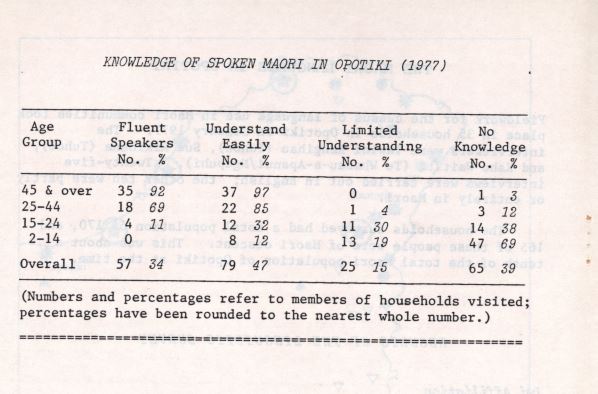-
Ngā Karere me Ngā Rauemi
News and Resources
Ngā Karere me Ngā Rauemi
News and Resources
-
Te Rangaihi Reo Māori
The Movement
Te Rangaihi Reo Māori
The Movement
-
Te Pae Kōrero
Our Community
Te Pae Kōrero
Our Community
-
Huihuinga
Events
Huihuinga
Events
-
Ngā Ara Ako
Learning Pathways
Ngā Ara Ako
Learning Pathways
-
SearchSearch
Search
Search

Many people were worried not only that fewer and fewer people could speak Maori, but also that the language may not last much longer. There was a lot of support for teaching Māori in schools, especially at the primary level, but some people said that the language had to be learned and spoken in the home first. They also said that Maori had to be helped along in the community as a language for everyday use, and not just a classroom subject or a language mainly for ceremonies on the marae. People said that there had to be more and better Maori language and culture programmes on TV and radio. More and more people, from school children to grown ups, are learning the language in schools, on marae or in private homes. All the same, some people in Opotiki gave Maori little chance of staying alive in towns and cities where English was always the main language for everyday use. They only spoke Maori in their country home areas, and used English with their neighbours friends or workmates in Opotiki.
Source: Read the full NZCER report here
Te Moana-ā-Toi | Bay of Plenty | Ōpōtiki | 1970-79 | 5% of Māori children can speak te reo. (1970-75) | Story is by tangata whenua
















Comments